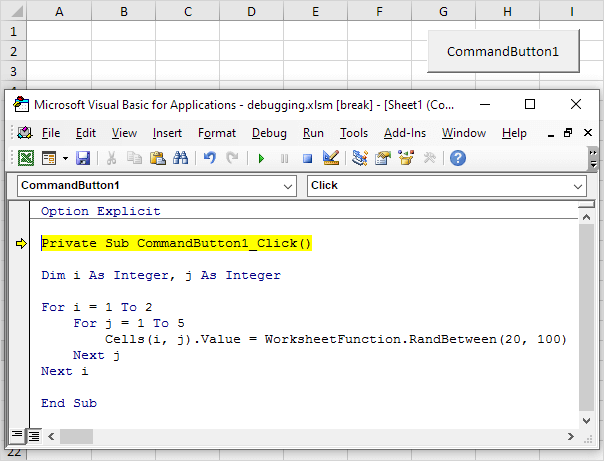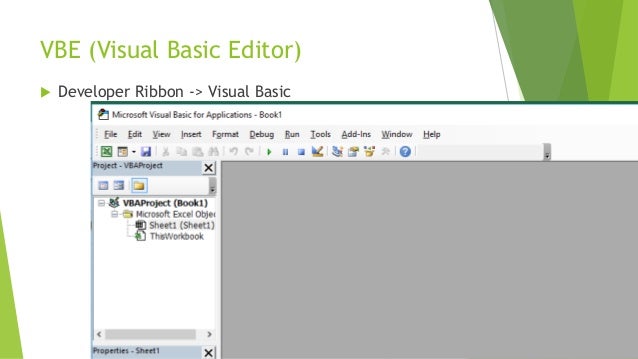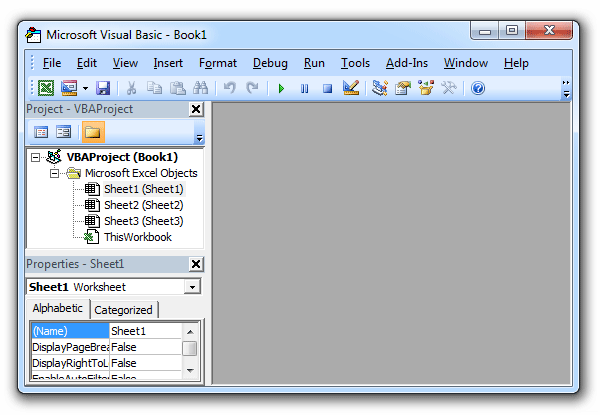
- #Visual basic for excel basics how to#
- #Visual basic for excel basics code#
- #Visual basic for excel basics windows#
#Visual basic for excel basics code#
You will be writing most of the VBA code in a module. Let’s suppose if you want to run code when you double click on a cell, in that case, you need to use the double click event and you need to add code to that worksheet.


#Visual basic for excel basics windows#
There are two different types of code windows and both look just the same but there is a difference that you need to know.
#Visual basic for excel basics how to#
Using VB Editor to Write a CodeĪt this point, you know all the major components of VBA editor, so now let’s learn how to add a code in it. You can use the Locals window in VBE to displays all declared variables in the current procedure and their present values. You can also use the CASE SENSITIVE search and decide the direction of the search as well. The find and replace option in VBE gives you different search patterns, like, if you want to find and replace something from the current procedure, from the current module, or from the current project. In fact, all Microsoft applications that host VBA use the Visual BasicĮditor for script writing (writing a code). Visual Basic Editor is the only way to write a VBA code inĮxcel. Even though it is a sperate application (VB Editor) you can only use it with Excel. In simple words, it’s a code editor for Excel in which you can write all the macros and store them. Visual Basic Editor is an application (a separate) in which you can write and save all the VBA codes. I will be using different words (VBA editor, VB editor, or VBE) in this guide for referring to the Visual Basic Editor, so don’t be confused with it. That’s why it’s part of our VBA tutorial and in this guide, we have covered every single aspect of Visual Basic Editor to make you understand it’s functionality. It’s the place where you write and manage all the macro codes and if you ask me about VBE, I’d say if you are serious about learning VBA you need to understand all the components of VBE.

Hence, it is important to understand this chapter thoroughly.The world of VBA starts with the Visual Basic Editor (VBE). Note − In further chapters, we will demonstrate using a simple button, as explained from step#1 to 10. Simply click it to turn it on if it is not on. Make sure that you do have design mode turned on. The output of the sub-procedure is shown in the following screenshot. Step 10 − Click the button to execute the sub-procedure. Step 9 − Start coding by simply adding a message. Step 8 − Now double-click the button and the sub-procedure outline will be displayed as shown in the following screenshot. Step 7 − Edit the name and caption as shown in the following screenshot.

Step 6 − Perform a right-click and choose 'properties'. Step 5 − Start scripting by adding a button. Step 4 − Click the 'Visual Basic' button to open the VBA Editor. Step 3 − The 'Developer' ribbon appears in the menu bar. Step 2 − Click ‘Customize the Ribbon’ tab and check 'Developer'. Step 1 − First, enable 'Developer' menu in Excel 20XX. In this chapter, you will learn how to write a simple macro in a step by step manner.


 0 kommentar(er)
0 kommentar(er)
